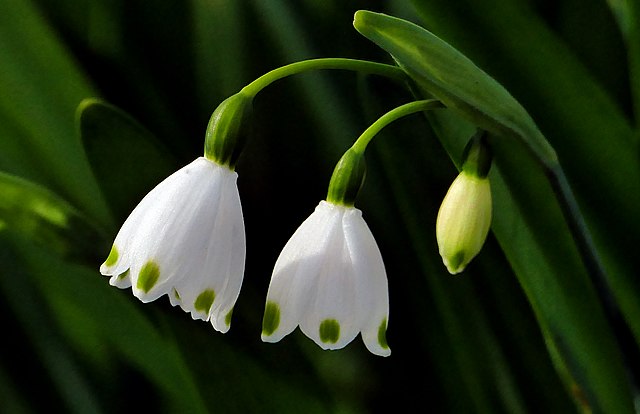
Snowdrops, Hope And Renewal
With its delicate, bell-shaped white flowers, and slender grey-green leaves, the snowdrop is usually considered to be a welcome sign of the end of winter and the approach of spring. Snowdrops are often associated with hope, purity, new beginnings, innocence and light. Nevertheless, they are also linked to some surprising superstitions. Seeing a single snowdrop flower was once believed to bring bad luck. Even in these modern times, some people still won’t bring snowdrops into their home.
The Flower Of Persephone, Goddess Of Spring And Nature
The complex symbolism of the snowdrop may derive at least partly from Greek mythology. According to myth, Persephone, the goddess of spring and nature, was forced by her uncle Hades to inhabit the underworld for the autumn and winter months, then brought snowdrops with her from the underworld when she returned to Earth each spring. Persephone’s time in the underworld is thought to represent death, signified by nature’s withering in mourning for her loss; her return to Earth brings about natural growth and renewal. Snowdrops are therefore ambiguously associated with both death and life.
The Snowdrop In Poetry: Sentimental Or Surprising?
Snowdrops were given the name ‘Galanthus’, meaning ‘milk flower’, in 1753; the best known variety is Galanthus nivalis, the common snowdrop. It’s also known as the ‘February fair-maid’, a nickname popularised by Alfred Lord Tennyson’s poem The Snowdrop, in which the snowdrop’s arrival is enthusiastically welcomed. The snowdrop features in many other famous poems, most of which treat the snowdrop with great affection and delight, sometimes verging on sentimentality. William Wordsworth’s sonnet To a Snowdrop also welcomes the flower’s appearance, praising its ‘modest grace’ and calling it ‘a venturous harbinger of Spring.’ George Wilson, in The Origin of the Snowdrop, terms it a sign of ‘brighter days’ approaching. But this seemingly delicate and gentle flower may have another side to it. Ted Hughes’s poem, Snowdrop, is the antithesis of sentimental: this is a chilling vision of sterile winter, which compels attention to the plant’s capacity for survival, despite its apparent fragility. Hughes’s snowdrop, hanging its head, which is ‘heavy as metal’, is ‘Brutal’.
Did you know?
Snowdrops don’t have petals. Instead, they have six outer segments.
Snowdrops aren’t pollinated by insects; they reproduce by bulb division.
Snowdrops are not native to the UK. They come from mainland Europe, and it’s thought they were introduced to the UK during the 16th century.
Snowdrops are associated with the Christian festival of Candlemas, which takes place in early February.
Snowdrop bulbs are poisonous, and should never be eaten.
For more information, take a look at these websites: The Wildlife Trust : Snowdrop and the National Garden Scheme: Fun facts about Snowdrops.